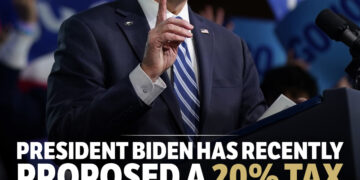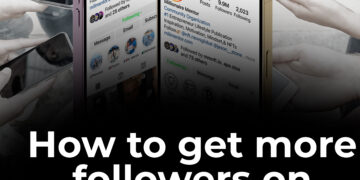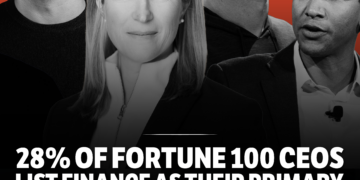
Are you curious how to unlock the magical formula for generating engagement with your target audience?
What if I told you the key to designing marketing content that converts is actually really simple and requires not even a single dash of pixie dust to work?
Growing your inbound audience is the lifeblood of your business. When your clients, customers, and competitors view you as an authority, profits soar. If people truly value the articles, images, and videos you produce, they share them and champion your brand.
There is too much to gain from content marketing to put the effort in and not generate serious engagement in the form of subscriptions, shares, time spent on your page and increases in your conversion rates.
According to the Content Marketing Institute, over 85% of B2B marketers attribute their success in 2017 to generating efficient and high-quality content.
The same organization found that only about 60% of B2C marketers are extremely dedicated to producing high-value content as a core element of their overall business strategy.
Whether you are a business seeking to sell to other businesses or to the public, your content marketing is a major opportunity!
“Content marketing is the gap between what brands produce and what consumers actually want.”
Content Marketing is the process of building long-term relationships and engagement with your target audience by consistently delivering meaningful and relevant content through channels they engage with.
Long ago, you manufacturers realized that they could sell more products if they linked up with companies that could produce animated cartoons for them.
Instead of simply relying on the power of advertising in media channels which children are less likely to engage with, say the television or radio, they placed their products in a unique context which children frequently watched, television.
As you might now be able to see, though content marketing has emerged as an all-encompassing buzz word related to digital marketing and online business, it’s been around for much, much longer.
Today, content marketing refers to a vast range of communicative mediums including blogs, pictures, videos, events and so much more. We will be diving deeper into these mediums in greater depth as we move forward.
“Content is the reason search began in the first place.”
– Lee Odden
Content marketing is absolutely an essential part of modern digital marketing strategy but it is important to remember that your efforts do not need to be limited to the online arena to make a huge impact on your customers.
There are various methods and channels for delivering offline content marketing that will lead to real results for your brand as well.
Content marketing is cost-effective and offers clear ROI. Compared with traditional advertising methods, content marketing costs 65% less and generates 3 times as many leads!
Content drives sales conversions. Typically brands that use content marketing convert 6 times as many people into satisfied customers.
The most successful brands already realize that content is the future of advertising. Take Coca-Cola for instance, today the brand spends more on initiatives like allowing its customers to customize their own bottles than it does on television campaigns.
The fact is, regardless of what marketing strategies you are employing, content marketing will be an element of your process whether you strategize it or not. If you are able to design a cohesive plan for utilizing it to your advantage, however, tremendous gains can be made.
You may be asking yourself why content is so important today?
The answer is simple: loyalty!
In today’s media landscape, customers are bombarded with tons of advertising messages. A great deal of them are tuned out instinctively as consumers can sniff out the blatant attempt to sell to them. The fact is, people love buying, but hate to be sold to.
This is precisely where content marketing strategy comes in. Instead of having to fight for the sale, you are creating a relationship and laying the groundwork for retaining customers who are loyal to your products and brand.
You might be asking yourself how a blog article, video or podcast can generate loyalty?
As people are searching the internet, they run into all kinds of content. Pictures, videos, articles. Some of these people engage with for seconds or maybe minutes, others will be poured over and analyzed time and time again, they will become trusted resources or perhaps sources of inspiration or entertainment.
When your target audience views the content you produce as being useful to their lives, they are less aware that you might be selling to them. In this way, instead of producing a commercial for a water gun, if you produce a blog article with videos of your family enjoying a water gun in a fun, wholesome way, it might be far more influential on parents who might happen to see the content.
They might have completely tuned out the flashy commercial. The blog and video are more appealing and they do not realize they are being sold to as apparently.
Every day, no matter where you go or what you do, you are being influenced by the way you interact with language.
The way you speak to yourself, the way you connect with others and the way your visual processing centers choose to skim this line or read the next, all these subtle decisions and choices are tied to the way you interact with the world of symbols contained within the languages we use on a daily basis. Words have long been connected to the concept of magic and the idea that speaking is an act of creation.
If you are a millionaire mentee who is motivated by making an impact on the world around you, then the words you use, might just be the most important area for you to consider on a daily basis!
Are you telling yourself successful stories, affirming what you already are or are you caught in negative loops of self-doubt?
Are you using language to influence people to make choices that are advantageous to you or are you turning them off to your ideas and way of thinking?
Are you conscious of the powerful effect your words have on the world around you and the people you wish to connect with?
Discussing the full wealth of content marketing strategies available on and offline is beyond the scope of this guide. Nonetheless, here is a look at some of the most relevant ways top brands use content marketing to appeal to their target markets and generate long-term engagement with their brands.
Offline Content Marketing Strategies
Did you know that to date the Star Wars franchise has earned $39,536,000,000 in total revenues?
As impressive as that is, it is important to keep in mind that actual movie sales whether for ticket sales, VHS, or DVDs, only accounts for $14,108,000,000.
The rest of the total revenues ($25,428,000,000) comes not from the movies themselves but from all the licensed and branded apparel that companies were able to sell in addition to the actual movies themselves.
Those sums of money are quite large; the sales of branded apparel really adds up!
From video games to comic books, posters to ceramic figurines, this branded universe of Star Wars has been extremely successful. Some might even argue that without all these branded products, the franchise would in no way be as viable today as it is.
What the creators of Star Wars have gotten right is how to match an incredible story with products that really captivate a target audience. Sure, the movies are iconic and made a huge amount of money but they do not compare to the earnings taken in from all the other branded apparel which Star Wars has been able to attach its name on over the years.
By giving fans a greater chance to interact with the Star Wars universe, they have created an extremely rabid and loyal following. While not every Star Wars product or movie has been a success, they have each helped the franchise to grow and consistently engage with its target market.
Now, not every Star Wars fan has to buy every single additional branded product but some of them will. Some people cannot stand not to have products from a company or brand they know and love.
This is why it is so important to produce content which really appeals and moves the people who you are seeking to influence.
When you walk into any multinational retail establishment, you are likely to come into contact with branded messaging. These are the logos, slogans, images, and icons that form the basis of how the brand seeks to communicate with its target market.
Some people might read the slogan of Lululemon, “Sweat Often. Smile Alway.” as being off-putting but for the members of the brand’s target audience, this is the kind of rallying call that gives inspiration and helps define a place that honors the active lifestyle they are likely to enjoy.
Other brands like Aflac, for instance, have been able to catapult their brand identity simply by creating extremely iconic branding messages in the form of commercials. On January 1st of 2001, Aflac unveiled its branding concept which was based on a duck quacking the brands name.
That duck would go on to become a central branding icon for Aflac and is today known around the world. For many people, it is hard to read the name Aflac and not think of the duck or the unique way the brand’s name was pronounced in advertising.
Before the Aflac advertising featuring the duck, the brand was not well known and was in no way one of the largest insurance providers. Today however, Aflac insures more people at work than any other company in the USA. They are also one of the few American companies to break into the Japanese insurance market.
There is no question about it: for Aflac, creating a powerful branded message that generated interest in the brand, coupled with relevant products, launched tremendous success.
Of course, Aflac also aggressively sold its insurance plans to employers and leveraged their brand in a million other ways away from that iconic duck. Without question though, one potentially risky move, ended up leading to real results and disruptions in such a well-established industry as insurance.
All around the world, brands are jockeying for leverage over their target audiences by trying to design brand identity and messaging. This is still one of the most important elements of marketing and selling any product.
Many of the most successful brands have been built on the strength of their branding instead of their innovative or exceptionally superior products. When you can give people what they want, it doesn’t matter what the other guys are offering.
This is where content marketing succeeds: when you are able to tell the story of your brand in a way that appeals to your target audience, they are on your side and will accomplish much of the legwork in championing your brand to new audiences.
Of course, if you combine offline and online content marketing strategy, mix in a healthy dose of digital and social media marketing, you will have a very potent strategy for building your brand and exciting your customer base.
Disney is an international brand that really knows how to make the best out of branded events.
If you take a look at the events planned in 2017 just for the Walt Disney Resort in Orlando, you will see a wealth of concerts, festivals, cultural events and destination opportunities connected to the branded merchandise so many of the company’s fans love.
These events help to connect Disney’s name and unique branded messages to other niches of their target audiences. In this way, these events help to win new fans as well as give long-term customers something truly meaningful which helps to generate a sustainable relationship.
This is what content marketing is all about: finding a way to give your customers something that they will really appreciate. The notion of adding value gets thrown around a lot but it doesn’t have to be any more complex than listening to your customers and giving them what they want.
Consider Disney’s branded event, The Disney Princess Half Marathon Weekend held February 22nd through the 25th. An event like this would likely really be a huge hit with anyone who loves Disney princesses and is an avid runner.
The brand might also have found that this kind of event appeals to people who love Disney princesses and are only casually interested in running. These people may have been more interested in the Disney content than the actual running but they were encouraged to join the event
Another segment of people who might go to an event like this might have absolutely no affinity towards Disney but simply liked the idea of being able to compete in a race in the middle of what is the winter for most of North America. For these people, they sign up and participate in the race simply because it’s a race not because of the branded content at all.
The results are the same for Disney though: in the middle of February, a time of year which is perhaps slower than many others for the Walt Disney Resort, they get to fill the park by focusing their attention on branded event.
The cost it takes to set up and market the event are minuscule compared to the profits raked in from ticket sales, hotel rentals and all the sales of branded apparel while people are actually inside the amusement park.
Branded events can be a great way to generate huge marketing buzz without having to spend a fortune. While not every brand will be able to host something on the scale of Disney, even small companies find huge success in promoting locally orientated regional events which appeal to their target audiences.
Online Content Marketing Strategies
Digital marketing has opened up a whole new landscape for content marketers to communicate with their audiences.
Platforms like social media simply didn’t exist in the golden years of advertising.
As these new media forms have matured so too have the myriad of ways of using them to reach audiences and drive engagement to brands.
Content marketing on a blog is one of the most efficient ways to generate leads that translate into sales conversions. You see, an SEO optimized blog acts like a lead magnet.
As potential customers are searching for information, they come across your blog posts and if they are well written and informative, you seem like a trusted authority.
While relationship building with a marketing blog is not something that happens overnight, it is an investment strategy which will lead to long-term gains and increased revenues for your business.
Your marketing blog does not need to be comprised simply of articles. There is every reason to test and explore new media forms and see which combinations are the most effective for captivating your audience.
A producing a well researched, entertaining and informative guide or eBook is one of the best ways to generate interest in your brand. Based on the same principals as a marketing blog, you can think of your guide as a longer format article which can act as a gateway into your sales funnel.
Many of the most successful brands use guides and ebooks to help build their email lists. In exchange for a customer’s email credentials, the customer receives a high-value piece of content which offers them strategic insight about a topic which they would like to learn more about.
A guide can also be a great way to generate passive income. While many guides are given away for free, some brands choose to monetize theirs. This can be a lucrative choice because the content that you produce once, can pay you for many years to come.
The more targeted and niche specific your guide is, the more likely people will be willing to pay for it. This is especially true if you focus on answering a question which does not have an answer readily available in the first page of a Google search.
One way that you can research topics is to use a website like Quora. With Quora, you can see which questions have been asked over and over again. These can be a good indication that the information available online is not sufficient and the general public is hungry for more insight about a given topic.
As with all content marketing, when designing a guide, it is important to focus on producing something of high quality that actually offers your readers something tangible that they will value. Some of the most successful guides teach, inspire or explain in simple language very complex subjects.
While written articles such as blogs and guides will always be more convincing when they are accompanied by high-resolution graphics, it is important to consider the many uses these communication tools can offer your brand.
Visual information is extremely valuable to all brands. Everything from pictures to graphs, infographics to comedic memes can help you to tell a story and connect with your audience in a more engaging way.
Written content is extremely valuable for generating traffic through search engine optimization but the visual content is really how you define the signature look and feel of your organization.
When you focus your efforts on placing your brand’s icons, slogans and messages on high resolution graphics, you are linking your audience to the unique pulse of your company. Not all graphics will work well with all audiences. It is up to you to test and refine your approaches until you arrive at the nexus of viral shareability.
This is the exact point where your audience is most engaged and thrilled about the content you produce. Instead of scrolling past your picture in their newsfeed, they are engaged and immediately want to share and champion your content further. When you can tap into this power, your content marketing translates into lasting gains and surges in profit.
Designing influential video content comes down to knowing your audience, showing them something they already want and selling an idea to them that benefits you by talking through any doubts and clearly positioning yourself.
Build trust, accountability and engagement by creating high value video content first and foremost. The more you have to say, the better you can define your ideas as adding value to your readers lives, the easier it will be to talk through any obstacles that could stand in the way.
Tell the story your audience wants to hear. Know your target audience and direct every element of your video content towards the kinds of results they are looking to achieve. Appeal, reveal and sell the deal: put your audience first, add value to their lives, create the atmosphere of a deal they simply can’t pass up on.
And don’t forget that even if you can’t afford a high quality, Hollywood style production, you can still make a huge impact by producing relevant self shot videos which frame you as the trusted expert. Believe it or not, these days, most audiences are more influenced by normal every day folks then they are by glossy celebrities and overly contrived marketing content that feels too advertising or sales focused.
Your videos will succeed when they feel genuine. Quality matters of course but don’t get discouraged if your videos have minor mistakes or shortcomings. These can actually help you to seem more approachable and human to your audience.
When people in your target audience interact with your content in meaningful ways, the most special is when they share. This feature is what drives viral campaigns which spread like wildfire.
When you can generate social sharing in your audience, your brand, influence and reputation grows. When the first time people interact with your brand is due to a friend’s heartfelt social media post, you are well on your way towards converting another customer.
Sharing is the currency of social media and should be a target for any campaign. If you can improve your share rate, you will see dramatic increases in all metrics related to profit and brand reputation. When people champion your brand, you have basically won.
Instead of having to pay money for your brand message to be duplicated across the internet, your customers do the legwork for you. When you can create a really exciting or engaging promotion that goes viral, you watch as all the heavy lifting is accomplished by your audience leaving you to rake in the earnings.
While content can serve many unique purposes, make sure you bake the idea of sharing into the design of any content you produce for social media.
You might ask yourself how relevant a piece of content is to your audience, how much does it engage them, does it ask them questions or encourage them to get involved
“If you don’t like what is being said, then change the conversation.” – Don Draper
Mastering the Art of Influence
Marketing is the art of influence. Your content needs to appealing for it to be influential.
It should add value, entertain, inform about new possibilities and reflect the things that are meaningful to your target market. The more you know about your audience, the easier it is to affect their language and to speak them in the form of well structured and ordered appeals.
As you design your content calendar, it is important to choose topics that are relevant to your industry and the people you serve. Every piece of content you produce should be organized around fulfilling one of several key areas of interest.
These niches will allow you to focus your attention on various issues or areas of concern which will help you to better connect with your target market.
You do not need to accomplish everything with anyone email, blog post or piece of content. Spread your ideas and angles around so as to be able to cover more ground and better align your content with the pulse that is driving your readers. Use language
Your overarching content marketing strategy could be leveraged to better explain your products or services, highlight a specific opportunity, compel a direct response or secure a purchase.
When you have a clear purpose guiding you, it is far easier to influence the people you are hoping to reach. In choosing themes that resonate with your audience and designing each piece of content with a clear purpose in mind, you set the stage for generating engagement.
People like reading and watching things that reflect the way they are, the things they aspire to and the lifestyle they occupy.
Your audience will gravitate towards content which is meaningful, adds value and helps them to see new opportunities.
Your marketing appeals will succeed and lead to conversions when they are seamlessly embedded within the context of material that your audience understands and feels strongly about.
Have you ever stopped to think about what lead you to click on a link?
It may have seemed like the most natural thing in the world. And yet something captured your attention and drew you in.
There is a very good chance that you were influenced by the complex array of symbols contained on the previous pages.
I use the word symbols instead of words because it is important to understand that not all the languages we use and interact with are linguistic or word-based languages.
Many potent symbols are based on concepts such as numbers, colors or symmetry, the way shapes and graphics are aligned together. All of these together form the landing page that you just happened on and decided to click.
Pain or Gain
In many cases, if we analyze the words and linguistic patterns of the most effective written sales or marketing focused copy, we will see that great efforts have been taken to appeal to human interest.
First and foremost, we are influenced by the things that are important to us. Now depending on the situation, specific individuals, based on their unique psychological makeup and history are more likely to be influenced by the language of “pain” or “gain”.
Another way to look at this is some people are more attuned to copy which motivates them to attain goals and others are more geared towards copy that motivates them to be able to solve problems.
The absolute best sales dialogues and written copy will harness both of these ideals and will present the ideas contained within them as “goals and benefits” and/or “problems in need of solutions”.
Similarly, understanding different personality styles can help you to decide whether you support your ideas with clearly verifiable evidence, supportive and relatable testimonials, or gentle but firm peer pressure.
For some people, making a choice and being influenced is guided more by logic. These people are really motivated first and foremost by the presence of clearly verifiable evidence. If you can present to them either “‘goals and benefits” or “problems in need of solution” supported by factual documentation which builds the logical basis for your ideas, they will be guided to act.
Others, being more influenced by the connections between ideas will more readily gravitate towards either supportive testimonials or divisive peer pressure. Both the testimonials and peer pressure appeal to the emotions.
They are influential for different reasons and will work best with different people depending, again, on their specific psychology.
Nailing the Content Context Conundrum
Perhaps you’ve heard “content is king”?
Well, context is queen!
Designing high-value content that informs and excites your target market while speaking to their desires and solving their problems in their own emotional language is the key to creating marketing content that drives interest and leads to sales conversions.
The language you use should not be overly complex. Using simple, everyday language is the key to gaining the respect of your audience
When your audience trusts your editorial voice and respects your perspective, they look forward to the articles you write and the opportunities you present.
Like many other areas of business strategy, consistency is key. Design the content you create to always fulfill a clear anticipated need that fills a void in the hearts and minds of the audience you are seeking to reach.
Use language to appeal to both the human emotional side as well as the more mechanical logical one. If you are able to connect to your audience intellectually as well as emotionally, they will find your unique value propositions even more challenging to resist. It is very important to consider that there are many different types of people within the unique target markets you are hoping to reach.
Consider a content marketing strategy that is multifaceted. Not every article will reach every member of your target audience and that is just fine.
When you can anticipate and solve their problems, you are adding value and creating a purpose for your unique message in their lives. Your customers will be influenced to act when they feel you are offering something which feels right.
Every piece of content should have a purpose which is guided by the desires of the people you are hoping to reach.
One of the best ways to achieve this is by focusing extensively on SEO.
While search engine optimization might not be practiced in the same way as it was in the web 1.0 you may have accessed from your first smart mobile device, it certainly hasn’t gone away.
One of the best ways to achieve this is by ensuring your content marketing aligns with your SEO strategy!
Conquering the Audio Visual Mountain
Did you know the human brain processes visual information in the form of pictures or videos 60,000 times faster than text alone?
That’s why blogging mastermind Neil Patel is so straightforward about recommending spicing the savory stew of your articles with healthy servings of picture, video, and audio based storytelling as well.
He stresses in particular that video content is far more influential for your audiences than text alone because it can combine pictures, audio, and text.
This is also why graphics such as infographics and graphs can help add value above simply posting text-based articles. Value translates into engagement with your audience and profits for your brand.
As we look to 2018, there is every reason to believe that customers around the world will continue to gravitate towards new forms of audiovisual medium.
In just a very short amount of time, there will be a massive race to design the best augmented or virtual reality ads and interactive digital billboards. The methods may change but the end result will always be the same: the brands that can master storytelling across new media will be given the keys to the kingdom
Designing the Perfect Content Marketing Blog
When you create informative and engaging blog material, you lay the foundation for influencing behavior and building reputation.
Your audience does not feel like they are being sold to when content marketing is successful. Instead, they feel they are connecting with information that is useful to their lives, responds to their concerns and anticipates their needs.
Being able to influence your target market with informative and engaging content is one of the most potent strategies you could ever employ to shift perspectives, gain reputation and convert leads into sales. To best appeal to your audience, always put their needs first. Direct your editorial output to fulfill clear aims which serve your readers.
At the end of the day, you will be growing new readership and influencing decision making. The language of influence may be subtle and nuanced but when wielded effectively, it can make all the difference in the world!
Putting it all together is so effective it might seem like magic:
- Design high value content that appeals to the emotional language of your audience.
- Use comprehensive on-page SEO to strategically target them.
- Drive engagement with a unique mix of audio-visual storytelling to supplement the text.
The Final Word on Content Marketing
Remember, content marketing can take time to get right. Constantly measuring and refining your results will generate success. There is no one, single way to the top.
Every brand will need to define it’s content marketing strategy in accordance with its target market, unique value proposition and expertise. If you are struggling to master one method of content marketing strategy, consider outsourcing that element of your marketing or simply focus on what you can do well.
What matters is communicating with your target market in a meaningful way, it does not matter what channels or methods you employ to generate engagement.
While a multifaceted content marketing approach will employ as many strategies as is necessary to capture the highest levels of sales conversions at the lowest cost; there are many ways to make gains by focusing on on and offline content marketing methods.
To conclude, here are the most important things to remember as you design your brand’s approach to content marketing:
- Create high-value content that your audience can’t help but want to share.
- Create something original even if that just means putting your own unique spin on a topic which has been covered many times before.
- Personalize the user experience as much as you possibly can.
- Tell a story that your audience can relate to and be inspired by.
- Design your content to work across many different channels and mediums.
- Teach your audience how to do things better.
- Work to mirror the unique emotional language of your target audience.
- Constantly test and refine your approaches.
- Be willing to explore new ways of packaging old content.
- When all else fails, look to the leaders in your industry and don’t be afraid to adopt strategies and make them your own.
Stay focused, get creative and establish yourself as an authority!
Trending News Articles
 Nvidia’s Red-Hot 2024 Start a Bright Spot as S&P 500 Eyes Recordby Jason Stone●January 15, 2024
Nvidia’s Red-Hot 2024 Start a Bright Spot as S&P 500 Eyes Recordby Jason Stone●January 15, 2024 Amid scrutiny from the European Union (EU), Microsoft is presenting arguments in favor of its proposed merger with Activision.by Jason Stone●February 28, 2023
Amid scrutiny from the European Union (EU), Microsoft is presenting arguments in favor of its proposed merger with Activision.by Jason Stone●February 28, 2023 Amazon will not host re:MARS robotics and AI conference this year.by Jason Stone●June 17, 2023
Amazon will not host re:MARS robotics and AI conference this year.by Jason Stone●June 17, 2023 Mastery In Real Estate Investmentby Jason Stone●January 12, 2017
Mastery In Real Estate Investmentby Jason Stone●January 12, 2017






